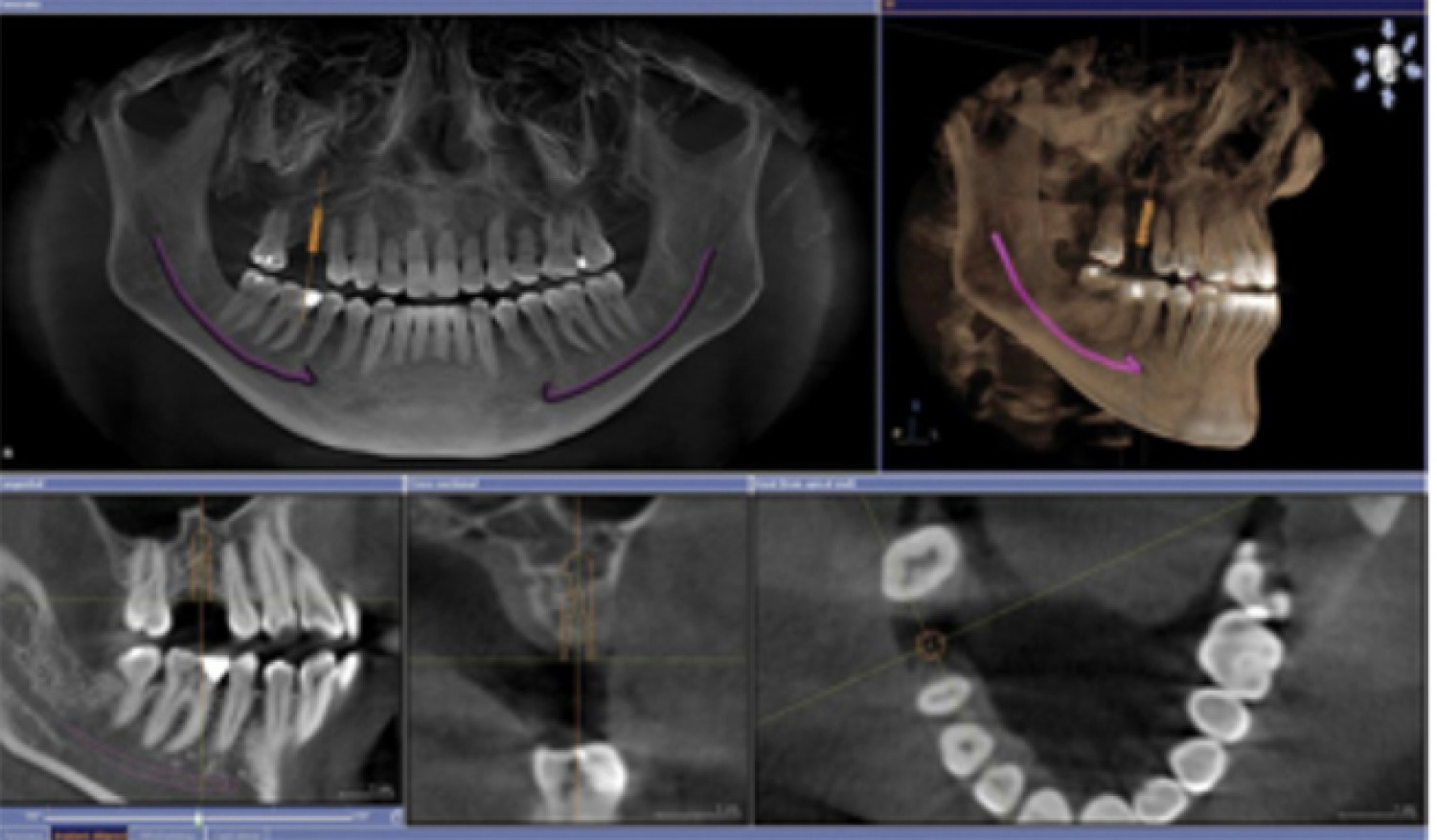

Guided bone regeneration (GBR) is a term that encompasses a variety of procedures aimed at either preserving bone following an extraction or regenerating bone that has been lost due to various factors. It's akin to saying "I'm going to make dinner," without specifying whether it will be microwave mac and cheese or a gourmet beef wellington-GBR encompasses a spectrum of techniques and approaches tailored to each patient's unique needs.
Following an extraction, the natural remodeling process of the bone begins, initiating with a resorptive (dissolving) phase followed by bone regeneration. Dr. Tedders emphasizes the significance of timely intervention to mitigate the extent of bone resorption, which can impact both bone and gum tissue quality and quantity.
Without intervention, this resorptive and regenerative process is termed "repair," where the body heals the area but may not fully restore it to its pre-extraction state. This concept holds particular importance in the maxillary anterior (top front teeth) region, where aesthetic considerations are paramount.
Dr. Tedders is dedicated to achieving optimal outcomes through guided bone regeneration techniques, ensuring that the final anatomical outcome closely resembles the pre-extraction morphology (shape). By intervening promptly and employing advanced regenerative techniques, he strives to preserve both the aesthetic and functional integrity of the patient's smile.
The various types of bone grafts include socket preservation grafting, onlay grafting, block grafting, and sinus augmentation.
Socket Preservation Grafting
Following the extraction, your doctor will ensure thorough removal of any remaining tissue or infection from the socket. The socket is then carefully filled with grafting material, which serves to promote bone regeneration and preserve the natural contours of the jawbone. To secure the grafting material in place and facilitate optimal healing, a collagen membrane is applied.
In some cases, your doctor may opt for immediate implant placement, where the implant is placed at the same time as the grafting procedure. This approach offers the advantage of reducing the overall treatment timeline and minimizing the number of surgical procedures required.
However, there are instances where staging the procedures is necessary to optimize outcomes. This involves allowing the graft to heal for a minimum of three months before proceeding with implant placement. Your doctor carefully assesses various factors, including the patient's oral health status, bone quality and quantity, and aesthetic considerations, to determine the most appropriate timing for implant placement.
Onlay Grafting
Onlay grafting is primarily utilized to address horizontal (width) deficiencies of bone, creating a suitable foundation for implant placement. Dr. Tedders is experienced in performing onlay grafting procedures, offering patients effective solutions for restoring bone width and optimizing implant placement outcomes.
Typically performed under local anesthesia, with sedation available upon request, the procedure utilizes specialized incisions to gain access to the underlying bone. Bone grafting material is carefully placed to augment the deficient area, promoting bone regeneration and providing adequate support for dental implants.
To protect the graft from the surrounding gingival (gum) tissues and facilitate optimal healing, a collagen membrane is secured over the graft. This membrane serves as a barrier, preventing gum tissue invasion and promoting undisturbed bone regeneration.
Dr. Tedders ensures meticulous closure of the surgical site using non-dissolvable sutures, with a follow-up appointment scheduled two weeks later for suture removal. Following the procedure, patients undergo a minimum three-month healing phase before impressions are taken for the final prosthetic restoration.
Block Grafting
Block grafting represents a reconstructive and regenerative approach primarily aimed at treating horizontal (width) deficiencies of bone, with the ability to address vertical (height) components as well. Dr. Tedders is skilled in performing block grafting procedures, providing effective solutions for moderate to severe ridge deficiencies and complex bone defects.
Unlike onlay grafting, which focuses primarily on horizontal bone augmentation, block grafting encompasses a broader scope of bone reconstruction, making it suitable for a range of clinical scenarios. It may involve the use of cadaver or autogenous (the patient's own) bone, depending on the individual needs and preferences of the patient.
During the procedure, specialized incisions are made to access the underlying bony defect, where the host bone is meticulously prepared. The osseous block graft is then carefully fitted to intimately adapt to the patient's host bone, providing structural support and promoting bone regeneration.
To optimize graft integration and healing, biologics and granular bone are utilized to fill any voids, and the graft site is secured with a collagen membrane. The surgical site is closed using non-resorbable sutures, ensuring proper wound closure and facilitating optimal healing.
